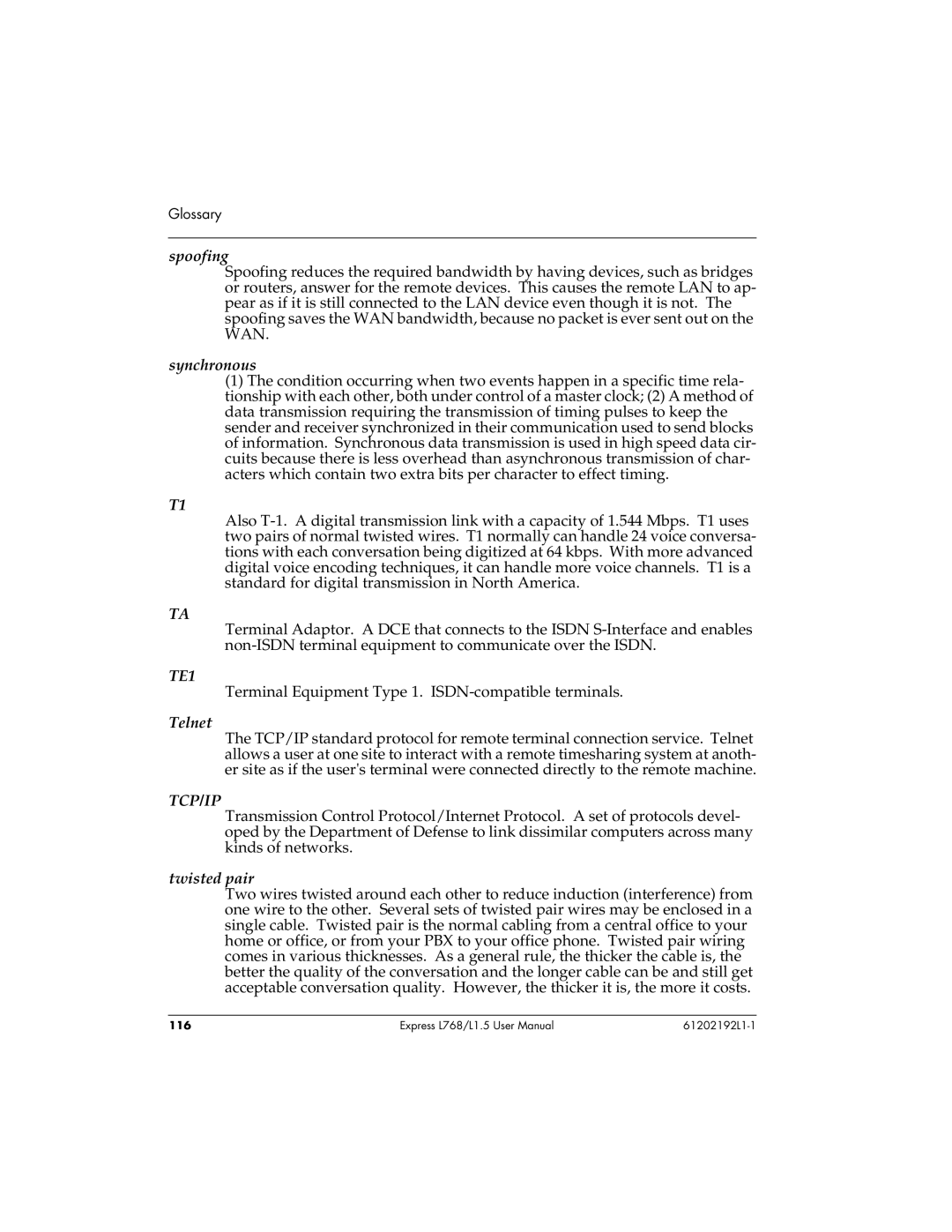
Glossary
spoofing
Spoofing reduces the required bandwidth by having devices, such as bridges or routers, answer for the remote devices. This causes the remote LAN to ap- pear as if it is still connected to the LAN device even though it is not. The spoofing saves the WAN bandwidth, because no packet is ever sent out on the WAN.
synchronous
(1)The condition occurring when two events happen in a specific time rela- tionship with each other, both under control of a master clock; (2) A method of data transmission requiring the transmission of timing pulses to keep the sender and receiver synchronized in their communication used to send blocks of information. Synchronous data transmission is used in high speed data cir- cuits because there is less overhead than asynchronous transmission of char- acters which contain two extra bits per character to effect timing.
T1
Also
TA
Terminal Adaptor. A DCE that connects to the ISDN
TE1
Terminal Equipment Type 1.
Telnet
The TCP/IP standard protocol for remote terminal connection service. Telnet allows a user at one site to interact with a remote timesharing system at anoth- er site as if the user's terminal were connected directly to the remote machine.
TCP/IP
Transmission Control Protocol/Internet Protocol. A set of protocols devel- oped by the Department of Defense to link dissimilar computers across many kinds of networks.
twisted pair
Two wires twisted around each other to reduce induction (interference) from one wire to the other. Several sets of twisted pair wires may be enclosed in a single cable. Twisted pair is the normal cabling from a central office to your home or office, or from your PBX to your office phone. Twisted pair wiring comes in various thicknesses. As a general rule, the thicker the cable is, the better the quality of the conversation and the longer cable can be and still get acceptable conversation quality. However, the thicker it is, the more it costs.
116 | Express L768/L1.5 User Manual |
